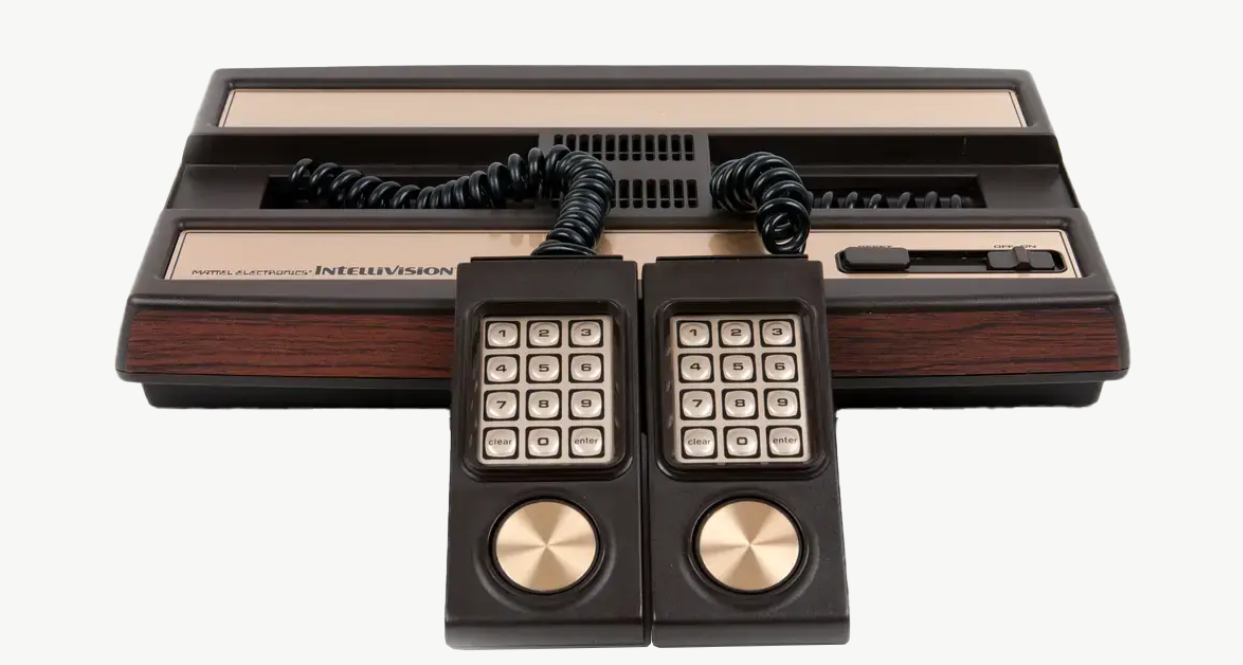In the late 1970s, toy giant Mattel, flush with success from iconic brands like Barbie and Hot Wheels, set its sights on a new frontier: the burgeoning home video game market. The launch of the Intellivision in 1979 was not merely a product release; it was a strategic move to diversify, innovate, and capture a more sophisticated segment of the gaming audience, directly challenging the Atari 2600 and kicking off what would become known as the first “console war.” While initially making a significant splash and selling an estimated 5 million units, a confluence of factors ultimately prevented Intellivision from achieving sustained, long-term dominance under Mattel, leading to a fascinating journey that recently culminated in an unexpected new chapter.
Mattel’s Strategic Play: A More “Intelligent” Approach to Gaming
Mattel’s entry into video games was a calculated endeavor. The company established Mattel Electronics, signaling a serious commitment to this new technological realm. The core of their strategy for Intellivision revolved around differentiating it from Atari. Mattel aimed to target an older, more discerning audience; where Atari focused heavily on arcade-style action, Mattel envisioned Intellivision (“Intelligent Television”) as a more sophisticated entertainment system. The marketing and game design were geared towards families and individuals who appreciated strategy, sports simulations, and more complex gameplay.
A cornerstone of this strategy was an emphasis on technical superiority. Intellivision boasted a 16-bit microprocessor, a significant leap from the 8-bit processors common at the time. This allowed for more detailed graphics, richer colors, and more complex sound capabilities. Mattel aggressively highlighted these advantages in competitive advertising campaigns, famously featuring sports journalist and actor George Plimpton in a series of ads directly comparing the two systems.
Content was also a key pillar. The Intellivision strategy heavily relied on its strong lineup of licensed sports titles, including Major League Baseball, NFL Football, and NHL Hockey. These games aimed for greater realism and strategic depth than their arcade counterparts. Beyond sports, the console offered a variety of strategy and educational titles. Furthermore, from the outset, Mattel marketed Intellivision as more than just a game console. The planned “Keyboard Component” was a crucial part of this vision, intended to transform the Intellivision into a full-fledged home computer. This forward-thinking approach aimed to position Intellivision at the heart of the evolving digital home. In a bid to maximize its reach in the video game market, Mattel also launched the M Network label in 1982, releasing video game titles directly for the Atari 2600, many of which were ports of existing Intellivision console games like Astroblast, Armor Ambush, and Tron Deadly Discs.
Why Intellivision Stumbled: A Perfect Storm of Challenges
Despite its initial promise and innovative approach, Intellivision’s journey under Mattel was fraught with difficulties. A primary factor was the Great Video Game Crash of 1983. This industry-wide implosion, fueled by market oversaturation, a flood of low-quality games, and waning consumer interest, hit all console manufacturers hard. Retailers drastically reduced orders, and many companies, including Mattel Electronics, suffered immense financial losses, ultimately leading Mattel to close its software division in 1984.
The much-hyped Keyboard Component also became a significant albatross. Plagued by development delays and high projected costs, its failure to materialize as promised led to consumer frustration and even scrutiny from the Federal Trade Commission (FTC). This damaged Intellivision’s credibility.
The Intellivision was also consistently more expensive than the Atari 2600. While justified by its superior technology, the higher price tag made it less accessible. Adding to its challenges were the unconventional controllers. While innovative, the disc-based directional pad and 12-button keypad were a departure from simpler joysticks, and some users found them unintuitive. Internally, Mattel Electronics began to incur substantial losses, putting significant strain on the parent company and forcing its exit from the video game hardware business.
Intellivision’s Enduring Legacy and Post-Mattel Era
Though Mattel stepped away, the Intellivision brand and its library of games maintained a dedicated following. The console was remembered for pushing technological boundaries and pioneering sophisticated sports and strategy games. In 1997, former Intellivision programmer Keith Robinson and Stephen Roney acquired the rights to the brand and its games. Through their efforts, various compilations and collections were developed throughout the 1990s and 2000s, keeping the Intellivision spirit alive for retro gaming enthusiasts.
A New Chapter: Atari Ends the World’s Longest-Running Console War
In a surprising turn of events that brought gaming history full circle, in May 2024, Atari announced the acquisition of the Intellivision brand and its intellectual property. This move effectively ends what Mike Mika, Studio Head at Digital Eclipse, called “the longest running console war in history.” He added, “Uniting Atari and Intellivision after 45 years ends the longest running console war in history.”
With this acquisition, Atari is bringing its former rival console publisher back into the fold. According to Atari, the company will seek to expand the legacy of Intellivision through digital and physical distribution of certain games from its portfolio of over 200 titles. Atari also plans to potentially create new games while exploring brand and licensing opportunities as part of a broader growth strategy.
Wade Rosen, Chairman and CEO of Atari, commented on the significance of the deal: “This was a very rare opportunity to unite former competitors and bring together fans of Atari, Intellivision and the golden age of gaming.”
This acquisition marks a poignant conclusion to a historic rivalry and opens up new possibilities for the beloved Intellivision properties. While Mattel’s original ambitious strategy for Intellivision faced significant hurdles, its impact on the early days of video gaming is undeniable. Now, under the stewardship of its one-time arch-nemesis, the Intellivision legacy is poised for a new era, ensuring that its “intelligent television” concept continues to resonate with gamers old and new.
